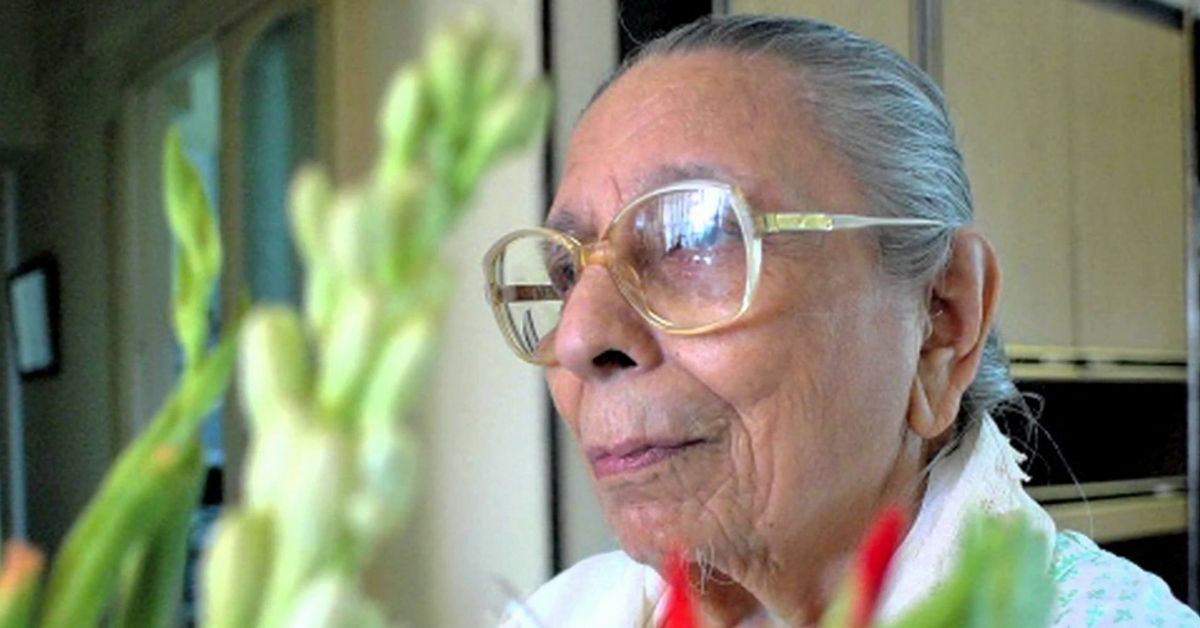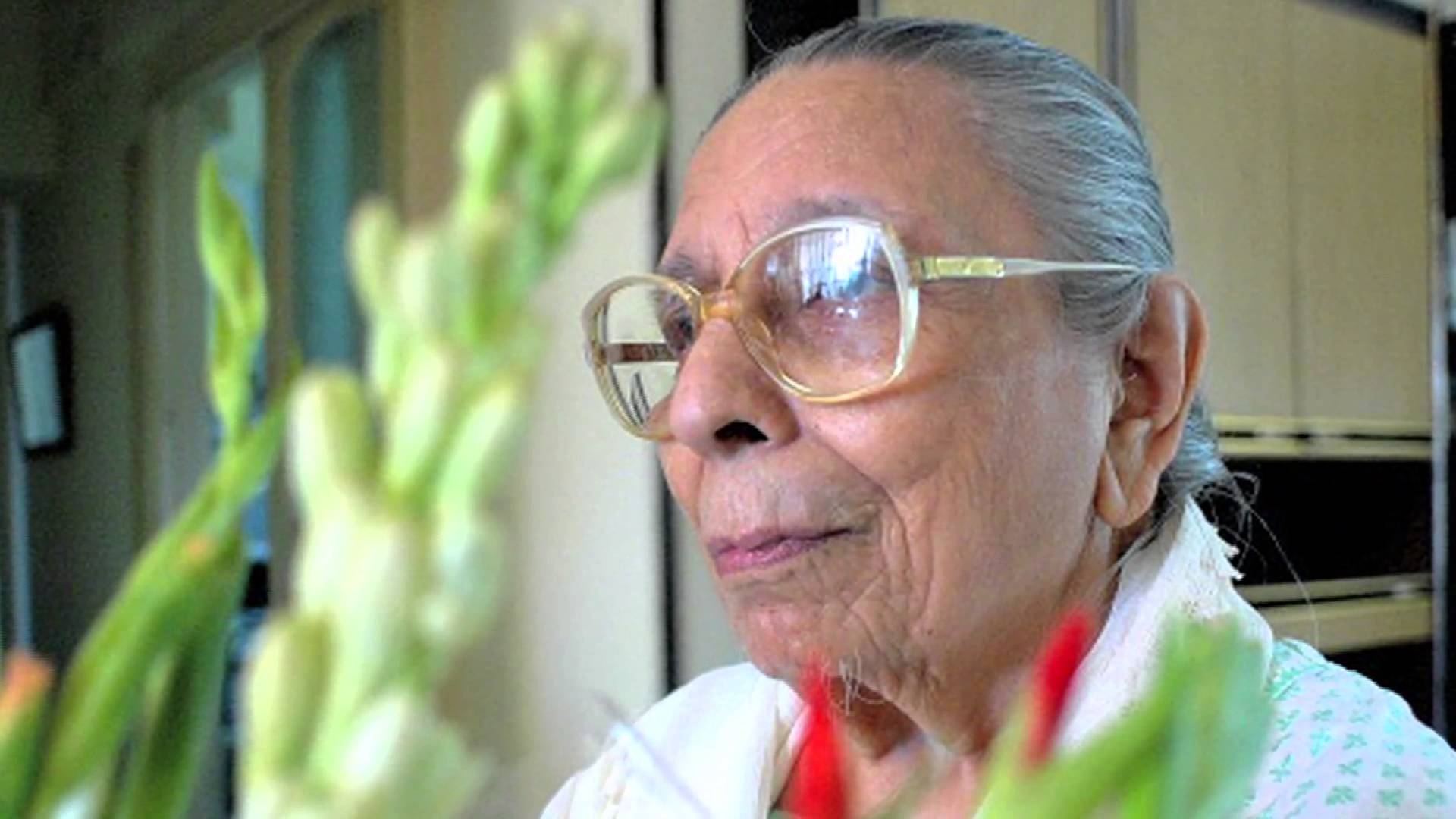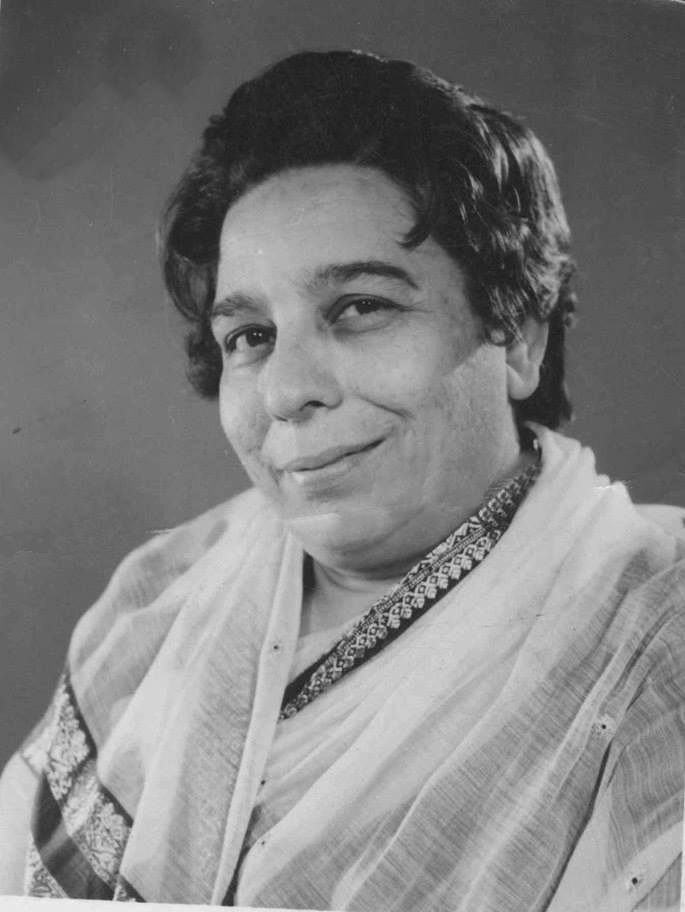Shamshad Begum: Hindi Cinema’s Original Nightingale
Selected to sing professionally from the age of 12, Shamshad Begum went on to become of the highest paid singers in the Hindi film industry.

Those who have a soft spot for old Hindi songs will immediately recognise yesteryear hits like ‘Le Ke Pehla Pehla Pyaar’, ‘Mere Piya Gaye Rangoon’ and ‘Kajra Mohabbat Wala’. Decades may have passed, but these songs continue to flourish both in their original versions and as remixes. Behind these and many other hits songs of Hindi cinema’s ‘Golden Age’ is the voice of a reclusive yet powerful singer, Shamshad Begum.
One of the first major playback singers in Hindi films and a Padma Bhushan awardee, Shamshad is often hailed as India’s original nightingale.
 Shamshad Begum, in her later years. Source: Facebook
Shamshad Begum, in her later years. Source: Facebook
Shamshad was born on April 14, 1919 in a Muslim Jatt family. In recent years, many reports have stated that she was born in Amritsar. However, the singer and her daughter have clarified this stating that her birthplace was actually Lahore, then a part of undivided India. Her father was a mechanic and her mother a homemaker. She also had eight siblings.
Growing up, Shamshad sang at weddings as well as at religious events and parties, though she had no musical training. There were no means to go viral in those days, but her vocal skills were appreciated by her listeners, none more than her uncle Amiruddin. He not only rewarded her for a good song, but also took her for auditions and convinced her father to let her be a professional singer. In a conversation with Gajendra Khanna, she mentioned how Amiruddin told her father that her voice was God’s gift.
She said, “Uncle took me to the audition which was taken by the company’s composer, Master Ghulam Haider. During the audition, I sang a Bahadur Shah Zafar ghazal, ‘Mera Yaar Gar Mile Mujhe Jaan Dil Fida Karoon’ and some marsiya. Master sahab was impressed by my voice and told me to sign the contract the same day. I was offered a contract to sing twelve songs at a rate of Rs 12.50 each which was a big amount in those times.”
She was around 12 or 13 at that time. Ghulam Haider helped her fine-tune her vocal skills and referred to her as his chaumukhiya, meaning an all-round artist who could sing any song. A few years after that, she got married to Ganpal Lal Bhatto, a Hindu lawyer. The marriage met with a lot of opposition and criticism, but it also testified to the young singer’s progressive ideals.
Before she made her foray into films, Shamshad sang a number of devotional and regional songs. According to one account, her first song as a professional was a Hindu devotional song and the recording company substituted her name with Uma Devi. As she began to sing frequently, with her name intact, she also gradually made her foray into singing for the radio and caught the attention of music directors.
After singing in Punjabi for movies like Yamla Jat and Gawandi, Shamshad lent her voice to Hindi movies starting with the 1941 movie Khazanchi, in which she sang all the songs.
 Shamshad Begum (left) in her early years. Source: Facebook
Shamshad Begum (left) in her early years. Source: Facebook
Those were the days of singer-actresses like Nur Jahan and Suraiya and Shamshad too received similar offers. However, she did not pursue acting, keeping her father’s wishes in mind, and concentrated on what she did best—singing.
Shamshad moved to Bombay in the early forties, and stayed on after the 1947 partition. By then, she had become a familiar voice for music lovers and a name to reckon with in the film industry. Between her hit movie songs, she recorded a rarely-heard song on the solemn occasion of Mahatma Gandhi’s death.
In her years of singing for the movies, Shamshad worked with every major music director including the likes of Naushad, OP Nayyar, Shankar-Jaikishen, SD Burman and many others. In an interview to the BBC, Naushad highlighted the singer’s beautiful voice, crediting her training in early life, and mentioned she was always soft-spoken and also very sentimental.
You might also like: A Freedom Fighter With a Feminist Soul, This Woman’s Contributions to Modern India Are Staggering!
Though she was known for her reclusive nature, Shamshad was no silent spectator in an industry of perennial highs-and-lows. OP Nayyar, who first met the singer when he was working as an office boy, approached her to sing for his first movie. Not only did she oblige, but she also came to his rescue on a later occasion, when the music director found that no female singer wanted to record with him after his dispute with Lata Mangeshkar. The incident is mentioned in Raju Bharatan’s book Asha Bhosla: A Musical Biography.
He writes, “[OP Nayyar’s] Shamshad-addressing plea was plain. It was that Lata Mangeshkar was so powerful that he would be ‘finished’ if Shamshad Begum didn’t come to his rescue posthaste. ‘Of course I will sing for you!’ shot back Shamshad Begum. ‘Who’s afraid of Lata Mangeshkar? Not this lady going under the label of Shamshad Begum’.”
Shamshad’s vocals brought the music alive in many iconic movies, such as Mother India, CID, Naya Daur, Shikari, Baiju Bawra, Andaz and Love in Shimla among others. She was one of the highest paid singers of her times and younger singers were often asked to imitate her voice. Though many of her earliest songs are no longer available, reports have said that she recorded about 2000 songs in her lifetime.
Even at her most successful, Shamshad remained publicity shy—she rarely attended parties and did not allow herself to be photographed.
Above: The iconic song ‘Mere Piya Gaye Rangoon’ sung by Shamshad
This is one of the reasons why there are not many photographs available of this singer. Her reticence came from her own nature, as well the request of her father who had expressed these wishes early in her career. She shrank away further from the spotlight after the demise of her husband.
It was only around the eighties, well after she had retreated from playback singing, when Shamshad began to give a few interviews. She lived in suburban Mumbai with her only daughter, devoting her time to her grandchildren.
So reclusive was this singer, that when another Shamshad Begum—actress Saira Banu’s grandmother—passed away in 2004, the media began reporting the death of the singer. It was Naushad who stepped in to clear the air.
You might also like: Rukmini Devi Arundale, the Legend Who Chose Dance Over Becoming the President of India
Shamshad passed away in 2012,at the age of 94, after a prolonged illness. By then, the reclusive singer had been awarded with numerous accolades including the OP Nayyar Award and Padma Bhushan, both in 2009. When she passed away, then Prime Minister Dr Manmohan Singh said that she captured the hearts of music lovers with her enchanting voice and unique tonal rendition. She was an artist of extraordinary talent and abilities, and the songs she has left behind in her long career, which she started with AIR in 1947, will continue to enthrall music lovers.
Like this story? Or have something to share? Write to us: [email protected], or connect with us on Facebook and Twitter.
NEW: Click here to get positive news on WhatsApp!
If you found our stories insightful, informative, or even just enjoyable, we invite you to consider making a voluntary payment to support the work we do at The Better India. Your contribution helps us continue producing quality content that educates, inspires, and drives positive change.
Choose one of the payment options below for your contribution-
By paying for the stories you value, you directly contribute to sustaining our efforts focused on making a difference in the world. Together, let’s ensure that impactful stories continue to be told and shared, enriching lives and communities alike.
Thank you for your support. Here are some frequently asked questions you might find helpful to know why you are contributing?


This story made me
-
97
-
121
-
89
-
167













